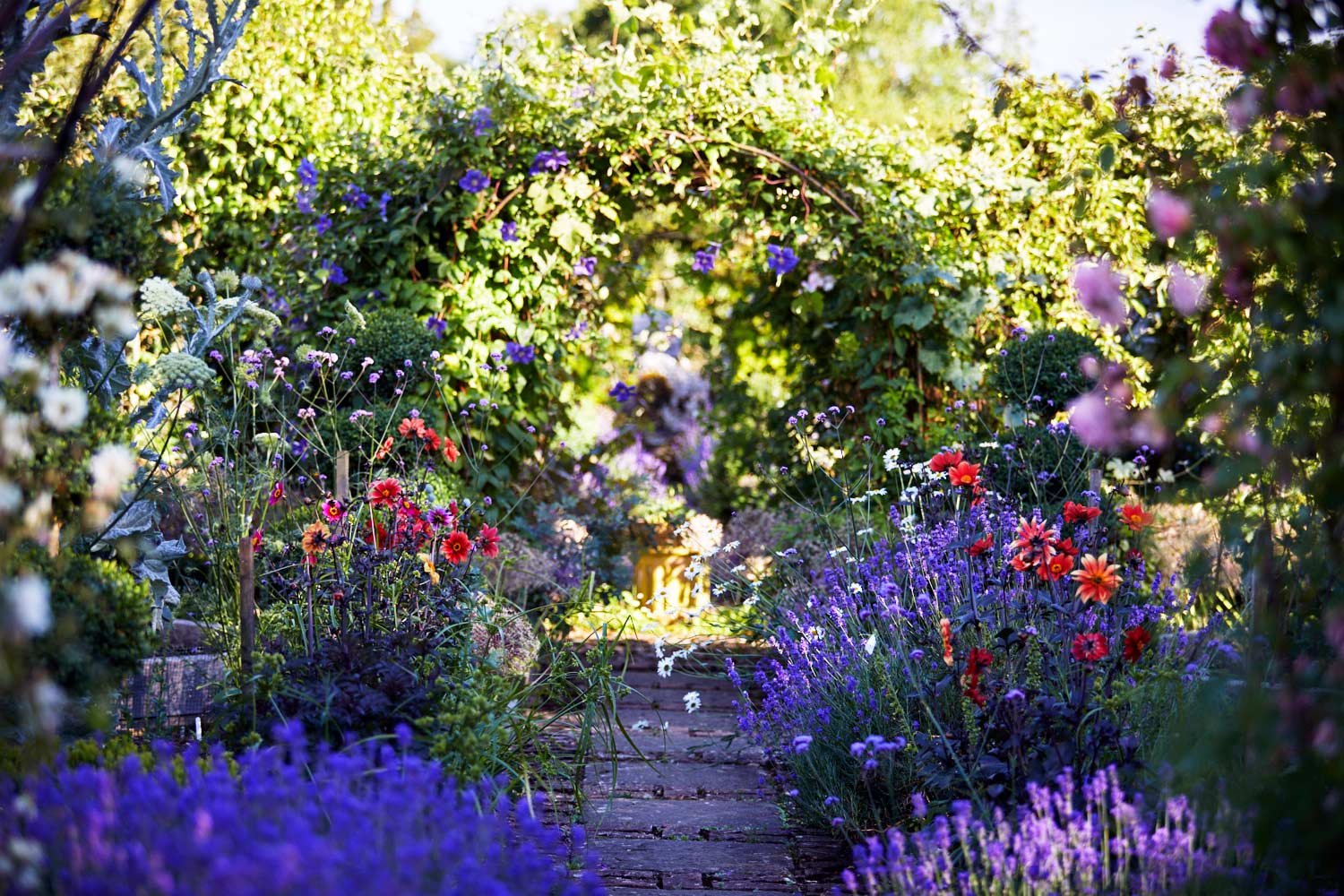
Gardens
We moved to Oxleaze Farm in 1983 and with three small children, the garden was pretty near the bottom on a list of priorities. I inherited a love of gardening from my grandmother, so I was so grateful for the potential my mother in law had created in the bones of the garden, the trees and the hedges, and for the first few years I merely observed what grew where, and when.
As the children grew, so did my frustration of wanting to get to grips with and make changes to parts of the garden. The size and scale of the vegetable and fruit garden were unsustainable – indeed, who on earth were they feeding? Row upon row of potatoes, turnips, beans, onions, shallots, sprouts – you name it, they grew it, not to mention the forest of soft fruit, which was jammed, pureed, bottled, and frozen. ‘Dig for Victory’ was still alive and kicking at Oxleaze.
The garden seriously needed dragging into the modern day with less help available and ground cover was a new word. I have always held fast to the rule that the least earth you see, the better. Where there is bare earth, there are weeds.
Working at the time with Rosemary Verey from nearby Barnsley House I was hugely influenced by the naturalistic planting in her borders and the intricacy of the vegetable potager. I created a vista wherever I possibly could and simplified the garden with a series of ‘rooms’, which gives the illusion of a much larger garden than it actually is.
Structure plays an enormous part. When you consider that half of the year is mostly devoid of flowers, evergreens and topiary are essential to create interest. Because I so enjoy taking cuttings you could be forgiven for thinking there are too many Box shapes, but if they were kind enough to root for me, I had to plant them somewhere!
By the same token, I am a sucker for a self seeder. If they decide to grow there, let them, and although not always appropriate this does give an overall softness and informality, which is the intention. There are those who hold firmly to the belief that gardens should look as if the gardener died six weeks ago….
However, this gardener is alive and kicking and always looking forward to the next season. It is a challenge to be positive in November but there are always bulbs to plant, and a cosy blanket of mulch to cosy up the plants in the border. Come January it starts happening all over again with new plans to put in place, seeds to sow, and a headlong rush to new and exuberant planting for the next year.
I see the garden at Oxleaze as a manageable microcosm of greater, larger gardens. Combining formality and informality the garden enjoys billowing borders, a pond and bog garden, vegetable potager and decorative fruit cage, woodland garden, a wild meadow, potting shed, and topiary for structure when the flowers fade.
The garden has brought an unexpected bonus in that it is used as a backdrop for bride and groom photos, painting en plein air, National Garden Scheme open days and it is so rewarding to be able to share what has been created.
My motto. The best time to plant a tree is 20 years ago, the next best time is today.




